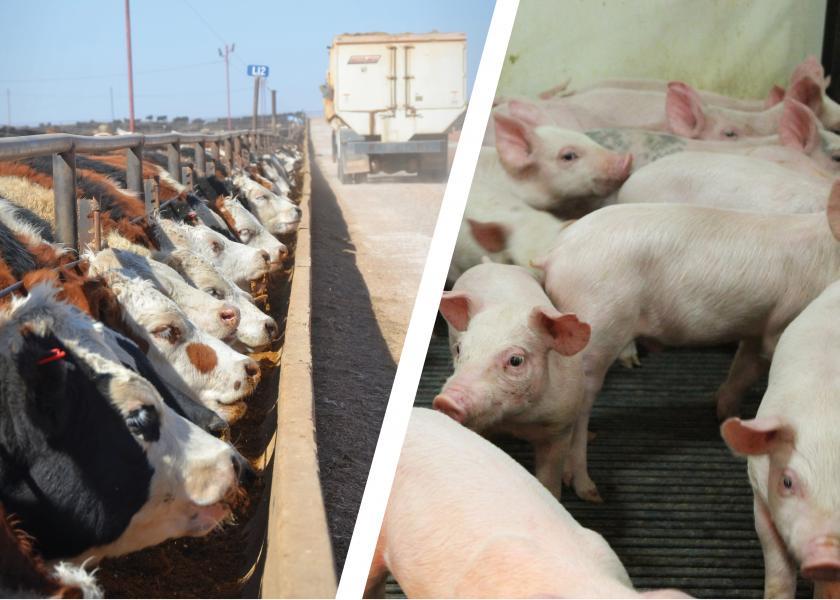Profit Tracker: Cattle Prices, Profits Decline; Pork Margins Gain

Cattle feeders found average profits near $417 per head the week ending June 24, a decline of $21 per head. The week’s 5-area direct price was $183.49 per cwt., which is $39 per cwt. higher (+21%) than the same week a year ago, according to the Sterling Beef Profit Tracker.
Beef packers found solid profits of $182 per head last week, up $10 per head from the previous week and up $6 from last year. Wholesale beef prices posted an average of $331 per cwt., down about $4 from the previous week. The Beef and Pork Profit Trackers are calculated by Sterling Marketing, Vale, Ore.
Cattle sold last week carried a total feed cost of $586 per head, up about $14 per head from the previous week, but 20% higher than the $475 feed costs for cattle sold the same week a year ago.
Cattle marketed last week had a breakeven of $153.69 per cwt., while cattle placed on feed last week have a breakeven of $176.13 per cwt. Cattle placed last week are calculated to have a purchase price for 750-800 lb. feeder steers at $226.48 per cwt., and feed costs of $505 per head. The feeder steer price is 38% higher than last year.
The estimated total cost for finishing a steer last week was $2,151 per head, up 14% from last year’s estimate of $1,842 per head.
Fed cattle slaughter totaled an estimated 505,571 head, about 12,000 head more than the previous week but 18,000 fewer than the same week last year. Packing plant capacity utilization was estimated at 84.0% compared to 82.6% last year.
Farrow-to-finish hog producers saw profits of about $21.50 per head last week, about $8 per head more than the previous week. Pork producers saw profits of $90 per head the same week a year ago. Lean carcass prices averaged $97.70 per cwt., up $2.92 per cwt. from the previous week.
Pork packers lost an average of $12.50 per head last week after losses of $19 the week before. Last year pork packers were losing about $36 per head. Hog slaughter was estimated at 2.372 million head, up 42,000 from the week before and up 61,000 head from last year.
Pork packer capacity utilization was estimated at 87.0% compared to 83.5% last year.
(Note: The Sterling Beef Profit Tracker calculates an average beef cutout value for the week in its estimates for feedyard and packer margins. Other prices in the weekly Profit Tracker also are calculated weekly averages. Feedyard margins are calculated on a cash basis only with no adjustment for risk management practices. The Beef and Pork Profit Trackers are intended only as a benchmark for the average cash costs of feeding cattle and hogs. Sterling Marketing is a private, independent beef and pork consulting firm not associated with any packing company or livestock feeding enterprise.)







